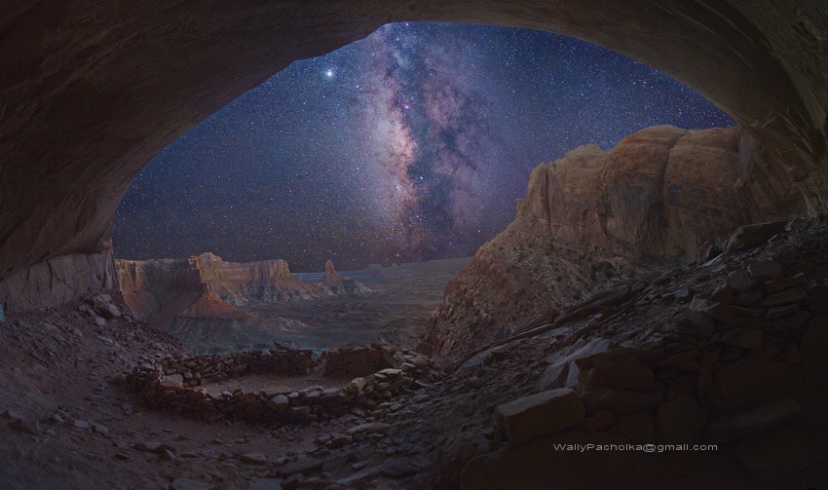Tucked away on the side of a cliff within the boundries of Canyonlands National Park lies False Kiva, one of the most spectacular and least visited Indian sites you are likely to see when traveling in the southwestern U.S. The name False Kiva is the result of uncertainty about its origin and whether it is an authentic kiva. It became a popular destination for photographers after the following image of it was published by Wally Pacholka a few years ago:

Since it is considered an archaeological site, the National Park Service does not publicize its location, and as a result very few people make the three mile round trip hike to visit it. The trail is pretty well marked with cairns but the final location can be tricky to locate as the site is not visible from the trail and the last section involves carefully scrambling up a steep incline to reach the alcove in which it is located. Once you arrive you are rewarded with an astonishing view, total silence and most likely no signs of other people except for a few footprints in the sand.
The site faces south and is best photographed in the late afternoon with a wide angle or fisheye lens as the entirety of the alcove is impossible to fully capture with a regular lens. Another alternative is to take multiple images and stitch them together. To photograph an image like the one above requires a visit in mid-summer to capture the Milky Way when it is high in the sky. Not wanting to risk having to hike out in the dark, I settled for this late afternoon image which I still think is pretty dramatic.
